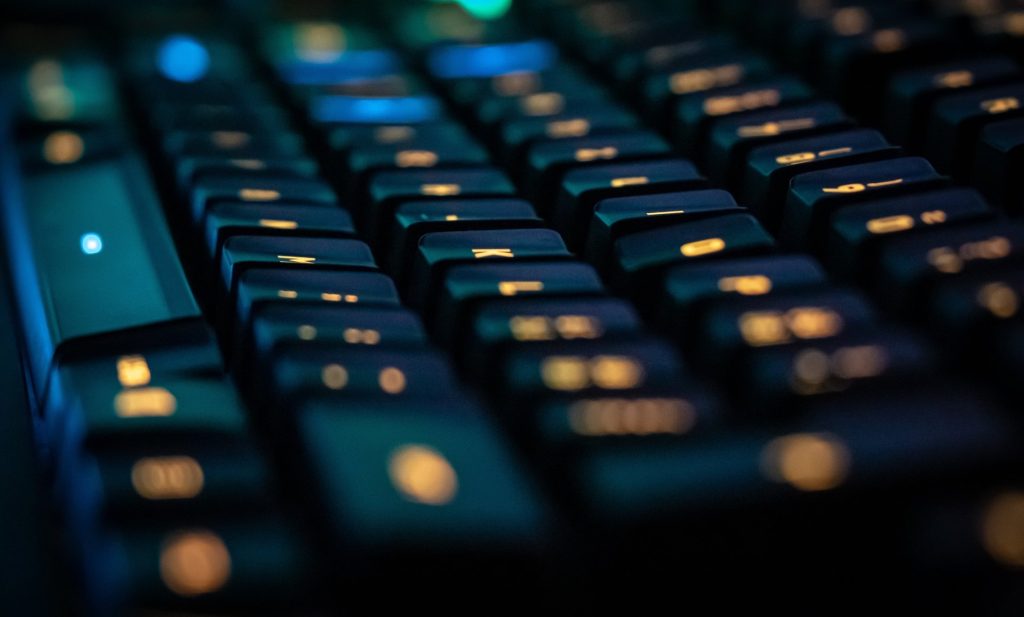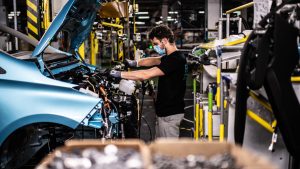How Computer Vision Can Enhance In-Store Operations – Daily Business

Brick-and-mortar retailers face a persistent challenge: delivering exceptional customer experiences while maintaining efficient operations in an increasingly competitive market. Physical stores must continuously innovate to remain relevant as digital alternatives offer convenience and personalization at scale.
Enter computer vision technology—a revolutionary approach that’s transforming retail operations from the ground up. This sophisticated technology uses cameras and artificial intelligence to interpret and analyze visual data in real-time, offering retailers unprecedented insights into their store dynamics.
What makes computer vision particularly valuable is its ability to automate tasks that have traditionally required significant human resources while simultaneously generating insights that were previously impossible to capture. From tracking inventory levels to analyzing customer behavior patterns, this technology is becoming the backbone of modern retail efficiency.


How Computer Vision Is Revolutionizing Retail Operations
The integration of advanced visual recognition systems into physical retail spaces represents more than just adding cameras—it creates an intelligent layer of analytics that transforms every aspect of store management. Let’s examine the specific ways computer vision enhances retail efficiency.
Automating Inventory Management
Perhaps the most immediate and impactful application of computer vision in retail environments is automated inventory management. Traditional inventory processes are notoriously labor-intensive and error-prone, often requiring staff to manually count items or scan barcodes—processes that disrupt normal operations and frequently produce inaccurate results.
Computer vision systems transform this process by:
- Continuously monitoring shelf stock levels in real-time
- Automatically detecting missing or misplaced products
- Identifying when items need replenishment
- Tracking product movement throughout the store
- Reconciling physical inventory with digital records
These capabilities dramatically reduce the time and resources required for inventory management while significantly improving accuracy. When paired with automated alerts, staff can be immediately notified when stock runs low, eliminating the common problem of empty shelves that frustrate customers and lead to lost sales.
Beyond basic stock counting, advanced computer vision systems can also detect patterns in product turnover rates, helping retailers optimize ordering processes and reduce both overstocking and stockouts. This data-driven approach to inventory management ensures that retailers maintain optimal stock levels without tying up excessive capital in inventory.
Enhancing In-Store Customer Experience
The customer experience remains the cornerstone of successful retail, and computer vision offers powerful tools to enhance how shoppers interact with physical stores. By analyzing shopper movements, facial expressions, and behaviors, retailers gain unprecedented insight into the customer journey.
Modern computer vision development companies are creating systems that can:
- Track customer dwell time in specific store sections
- Identify areas of customer confusion or frustration
- Monitor queue lengths at checkout points
- Analyze demographic patterns of store visitors
- Recognize returning customers (with appropriate privacy measures)
This wealth of information allows retailers to make informed adjustments to store layouts, staffing levels, and customer service approaches. For example, if vision systems detect consistently long checkout lines during specific hours, management can adjust staffing accordingly. Similarly, if customers routinely seem confused in particular store sections, this might indicate a need for clearer signage or reorganization.
Some advanced implementations even enable personalized experiences similar to those found online. When integrated with loyalty programs and with proper consent, computer vision can help staff identify high-value customers as they enter the store, allowing for personalized service that acknowledges their preferences and purchase history.
Optimizing Store Layout and Product Placement
Store layout significantly impacts both customer satisfaction and sales performance. Computer vision provides retailers with objective data about how customers actually move through and interact with their spaces, replacing guesswork with evidence-based design decisions.
By generating heat maps of customer traffic and analyzing engagement patterns with specific displays, computer vision for retail enables optimization that directly impacts bottom-line results. Retailers can test different layouts, display configurations, and product placements, then measure the actual impact on customer behavior rather than relying on assumptions.
These systems can answer critical questions like:
- Which store sections receive the most foot traffic?
- Where do customers spend the most time?
- Which displays attract attention but don’t convert to sales?
- How do seasonal changes affect movement patterns?
- Which products are frequently considered together?
Armed with this information, retailers can make strategic decisions about product placement, ensuring high-margin items receive appropriate visibility and complementary products are positioned effectively. The result is a store layout that naturally guides customers toward purchases while providing an intuitive shopping experience.
Beyond optimizing existing layouts, this technology also enables continuous improvement through A/B testing of different merchandising strategies. Retailers can implement changes in specific sections and precisely measure the impact on customer engagement and sales performance, creating a cycle of data-driven optimization.
Enhancing Security and Loss Prevention
Retail shrinkage—including theft, employee fraud, and administrative errors—consistently erodes profit margins across the industry. Traditional security approaches like security guards and basic surveillance have limited effectiveness and often create an unwelcoming atmosphere for legitimate customers.
Computer vision offers a more sophisticated approach to loss prevention that balances security needs with customer experience. These systems can:
- Detect suspicious behavior patterns without profiling
- Identify unusual activity at checkouts that might indicate fraud
- Recognize known shoplifters from previous incidents
- Monitor for inventory discrepancies in real-time
- Track items throughout the store to reduce administrative errors
The preventative aspect of these systems is particularly valuable. When potential thieves recognize the presence of advanced surveillance, it creates a powerful deterrent effect without requiring confrontational security measures that might alienate honest customers.
For employees, knowing that transactions are being monitored by impartial systems reduces opportunities for fraud while providing protection against false accusations. This creates a more transparent working environment while protecting the business from internal threats.
Beyond direct theft prevention, retail computer vision also helps identify operational vulnerabilities that might contribute to loss. For example, if certain store areas have consistent inventory discrepancies, this might indicate a blind spot in existing security measures or a process issue that needs addressing.
Real-Time Analytics for Smarter Decision Making
Perhaps the most transformative aspect of computer vision in retail is the shift from retrospective analysis to real-time decision making. Traditional retail analytics rely heavily on point-of-sale data, which only captures the final purchase decision rather than the entire customer journey.
Computer vision changes this dynamic by providing continuous, real-time information about what’s happening throughout the store at any moment. This immediate feedback loop allows managers to:
- Adjust staffing levels dynamically based on current customer traffic
- Deploy assistance to sections where customers appear to need help
- Modify displays that aren’t performing as expected
- Address inventory issues before they impact sales
- Respond to security concerns as they develop
This shift to real-time operations transforms retail management from a primarily reactive function to a proactive one. Rather than discovering issues through end-of-day reports, managers can address them immediately, often before they impact customer experience or sales performance.
The integration of computer vision analytics with other business systems creates particularly powerful capabilities. When vision data is combined with point-of-sale information, online analytics, and inventory systems, retailers gain a comprehensive understanding of their operations that spans both digital and physical channels.
The Strategic Value of Computer Vision in Retail’s Future
As we look toward the future of retail, computer vision represents more than just an operational improvement—it’s a strategic asset that can fundamentally transform business models and competitive positioning.
Bridging the Online-Offline Divide
One of the most significant challenges for traditional retailers has been matching the data-rich environment of e-commerce. Online retailers have long enjoyed detailed analytics about customer behavior, including exactly which products customers view, how long they consider options, and which items they abandon in carts.
Computer vision brings similar analytical capabilities to physical retail environments. By tracking customer interactions with products, not just purchases, retailers gain insights similar to website analytics. This helps bridge the information gap between online and offline channels, creating truly omnichannel retail experiences.
For retailers operating both physical and digital storefronts, this integration is particularly valuable. Understanding how customers interact across channels allows for more coherent marketing strategies and product offerings that reflect actual customer preferences rather than channel-specific assumptions.
From Data Collection to Predictive Optimization
As computer vision systems collect more data over time, they become increasingly valuable for predictive analytics and optimization. Initial implementations typically focus on monitoring and reactive adjustments, but mature systems can anticipate needs and proactively optimize operations.
For example, after collecting sufficient historical data, these systems can predict traffic patterns based on factors like weather conditions, local events, or seasonal trends. This allows retailers to optimize staffing and inventory in advance rather than reacting to situations as they develop.
Similarly, over time, these systems can identify subtle patterns in customer behavior that might indicate future purchasing decisions. This predictive capability helps retailers stay ahead of consumer trends and adapt their offerings accordingly.
Creating Sustainable Competitive Advantage
In an era where retail margins are under constant pressure, operational efficiency is not merely about cost reduction—it’s about creating sustainable competitive advantages. Computer vision technologies offer precisely this opportunity by simultaneously improving customer experience while reducing operational costs.
Retailers who successfully implement these technologies can:
- Reduce labor costs through the automation of routine tasks
- Improve inventory turnover by maintaining optimal stock levels
- Enhance customer satisfaction through better service and product availability
- Decrease shrinkage through more effective loss prevention
- Make better strategic decisions based on comprehensive data
These benefits compound over time as systems become more sophisticated and staff become more adept at leveraging the insights they provide. The result is a virtuous cycle of improvement that becomes increasingly difficult for competitors to match.
Conclusion: The Intelligent Retail Revolution
The adoption of computer vision in retail represents a fundamental shift in how physical stores operate and compete. By bringing data-driven intelligence to every aspect of retail operations—from inventory management to customer experience to loss prevention—this technology creates opportunities for significant efficiency gains and service improvements.
For retailers facing intense competitive pressure, computer vision offers a path to transformation that doesn’t require abandoning physical retail’s inherent strengths. Instead, it enhances these strengths with digital capabilities, creating stores that combine the immediate gratification and sensory experience of physical shopping with the intelligence and efficiency of digital commerce.
The retailers who will thrive in the coming years will be those who successfully integrate these technologies into their operations and culture. This doesn’t mean blindly adopting every new technology, but rather strategically implementing solutions that address specific business challenges and create measurable value.
As computer vision technology continues to mature and become more accessible, even smaller retailers will have opportunities to leverage these capabilities. The question for retail businesses is not whether to adopt computer vision, but how to implement it in ways that align with their specific business model and customer expectations.
#Computer #Vision #Enhance #InStore #Operations #Daily #Business




